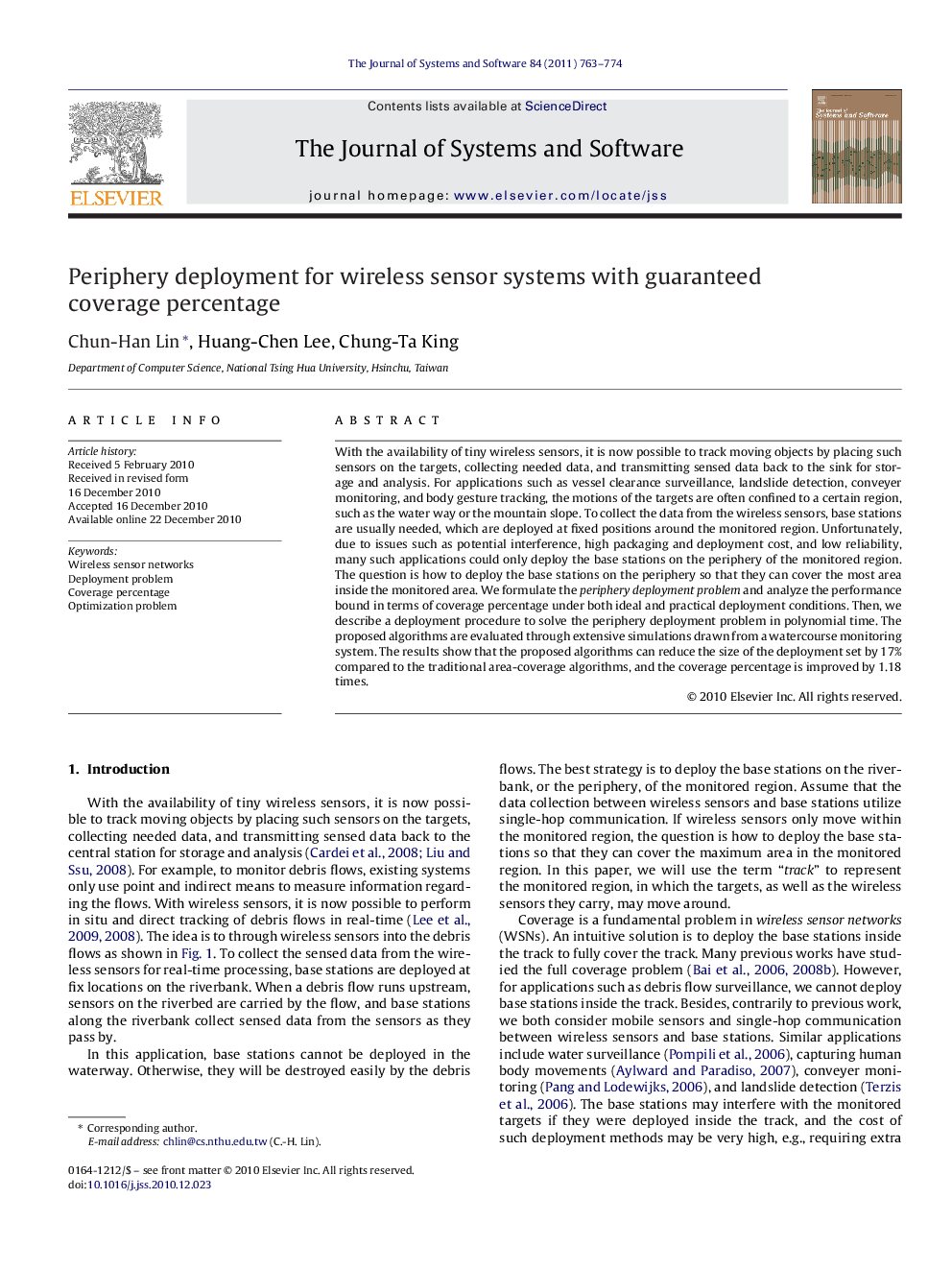| Article ID | Journal | Published Year | Pages | File Type |
|---|---|---|---|---|
| 458779 | Journal of Systems and Software | 2011 | 12 Pages |
With the availability of tiny wireless sensors, it is now possible to track moving objects by placing such sensors on the targets, collecting needed data, and transmitting sensed data back to the sink for storage and analysis. For applications such as vessel clearance surveillance, landslide detection, conveyer monitoring, and body gesture tracking, the motions of the targets are often confined to a certain region, such as the water way or the mountain slope. To collect the data from the wireless sensors, base stations are usually needed, which are deployed at fixed positions around the monitored region. Unfortunately, due to issues such as potential interference, high packaging and deployment cost, and low reliability, many such applications could only deploy the base stations on the periphery of the monitored region. The question is how to deploy the base stations on the periphery so that they can cover the most area inside the monitored area. We formulate the periphery deployment problem and analyze the performance bound in terms of coverage percentage under both ideal and practical deployment conditions. Then, we describe a deployment procedure to solve the periphery deployment problem in polynomial time. The proposed algorithms are evaluated through extensive simulations drawn from a watercourse monitoring system. The results show that the proposed algorithms can reduce the size of the deployment set by 17% compared to the traditional area-coverage algorithms, and the coverage percentage is improved by 1.18 times.
